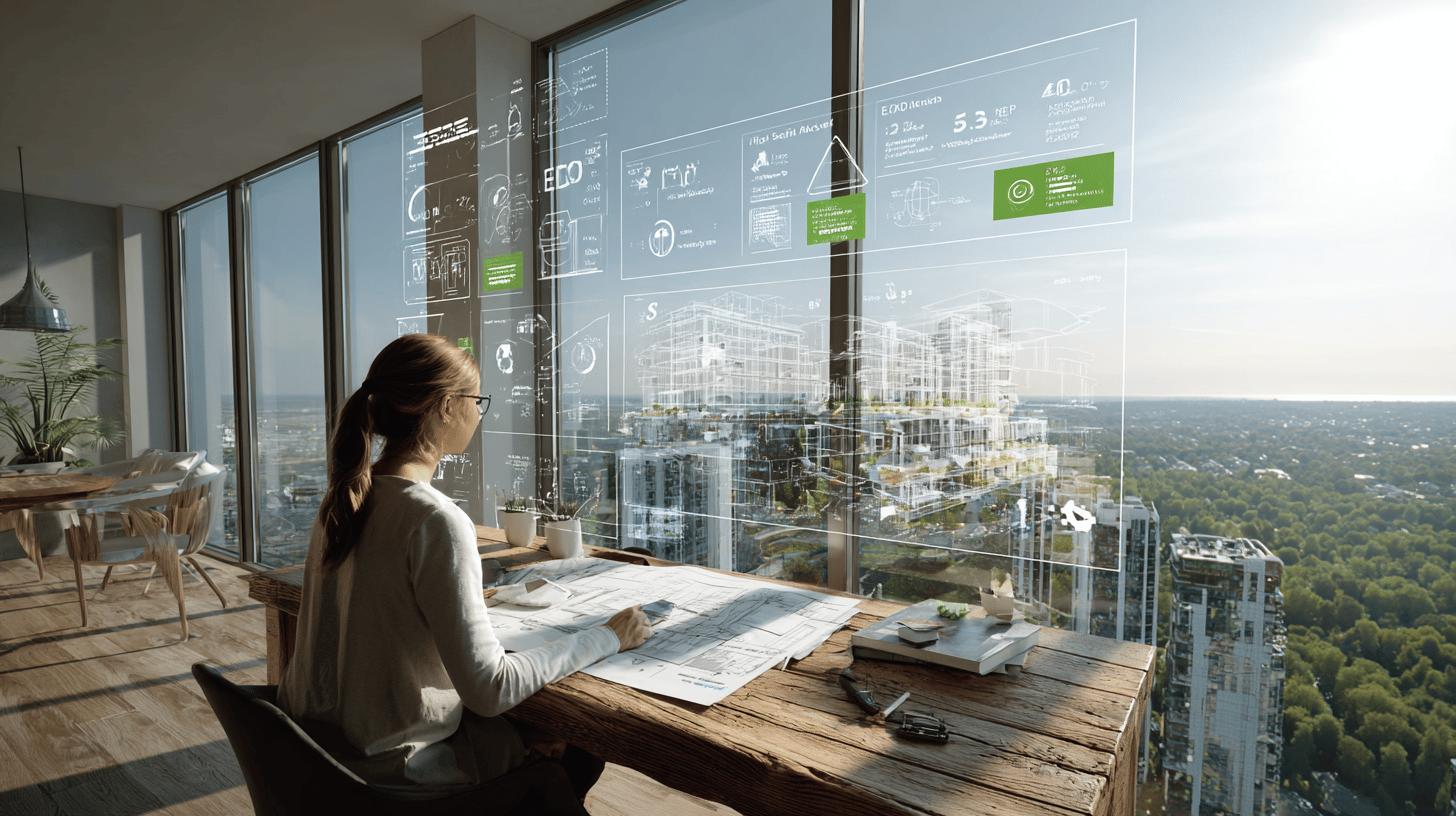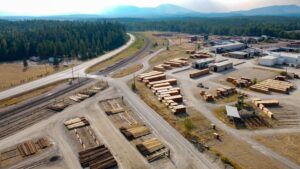“Most construction EPDs fail to meet global compliance because they rely on outdated standards and fragmented data.”
ISO 21930 offers a unified, internationally recognized framework for building sustainability – transforming how construction teams measure, document, and improve product environmental performance.
This article breaks down exactly what ISO 21930 covers, why it is considered the benchmark for sustainable construction in 2025, and how your team can align with the latest compliance demands for measurable, market-ready results.
Get the tactical steps to modernize product data, simplify reporting, and gain supply chain visibility – all without the manual overhead.
What Is ISO 21930? Understanding the Sustainability Standard for Construction
ISO 21930 is the international building sustainability standard titled “Sustainability in buildings and civil engineering works – Core rules for environmental product declarations of construction products and services.” Developed by the International Organization for Standardization, ISO 21930 outlines how to consistently assess and report the environmental performance of building materials and construction products. Its main objective is to provide reliable, transparent guidelines for measuring environmental impacts across the entire life cycle of buildings and infrastructure.
- Defines the core rules for creating Environmental Product Declarations (EPDs) for construction products and services
- Establishes a methodology for evaluating the eco-friendliness of building materials, from raw material extraction through disposal or recycling
- Supports consistent, comparable sustainability assessments across global construction markets
- Aligns with sustainable construction guidelines and construction standards for low carbon projects
ISO 21930 serves as a foundational reference for organizations aiming to meet stricter regulations, achieve net-zero targets, and respond to growing demand for sustainable construction. The standard is especially relevant for manufacturers, retailers, and supply chain managers who must demonstrate environmental compliance and provide verified data to stakeholders. By setting a universal method for environmental product declarations, ISO 21930 drives accountability and transparency, making it a cornerstone for sustainable development in the construction sector.
ISO 21930 Environmental Product Declaration Guidelines: Core Rules and Structure

Environmental Product Declarations (EPDs) are standardized documents that communicate the environmental impact of building materials and products across their life cycle. ISO 21930 provides the environmental product declaration guidelines that define how EPDs should be created, interpreted, and reported in the construction sector. EPDs built on this green building environmental standard give manufacturers, supply chain managers, and stakeholders consistent, comparable insights into the eco product declaration process.
ISO 21930 mandates that EPDs cover all life cycle stages – raw material extraction, manufacturing, use, and end-of-life – so that every declaration of building materials impact is transparent and complete. Product Category Rules (PCRs) are central to this process, setting out the specific requirements and calculation rules for different product groups within the standard.
- Identify the relevant Product Category Rules (PCRs) for the product group.
- Gather and verify life cycle data for the product, covering raw materials to disposal or recycling.
- Conduct a life cycle assessment (LCA) following the guidance in the PCR and ISO 21930.
- Compile the EPD, ensuring all required environmental indicators and data are reported clearly.
- Have the EPD independently verified to guarantee transparency, accuracy, and credibility.
Following this structure ensures environmental declarations are reliable and comparable across projects, suppliers, and regions. The ISO 21930 framework builds trust in sustainable construction by making environmental reporting more robust and actionable for regulatory compliance and supply chain transparency.
How ISO 21930 Supports Sustainable Construction and Regulatory Compliance
ISO 21930 sets a benchmark for sustainable construction environmental criteria by providing a structured approach to environmental reporting and eco‐compliance building regulation. This standard enables construction companies, manufacturers, and supply chain managers to evaluate, report, and actively reduce their carbon footprint according to global sustainability goals. By requiring detailed, verified data on environmental impacts, ISO 21930 ensures that all stakeholders – contractors, developers, and regulators – can access transparent, comparable information that supports regulatory framework for eco buildings and sustainability compliance accreditation.
Using ISO 21930, organizations can streamline documentation for green building certifications such as LEED and BREEAM, and meet the strict reporting requirements of frameworks like the Corporate Sustainability Reporting Directive (CSRD). The standard’s alignment with these widely recognized systems simplifies the process of demonstrating compliance and accelerates progress toward net-zero and sustainable development in construction. This results in improved supply chain transparency, better risk mitigation, and a strong foundation for meeting future environmental regulations.
| Framework | Focus & Scope | Reporting Requirements | Geographic Scope |
|---|---|---|---|
| ISO 21930 | Environmental product declarations (EPDs), sustainable construction criteria | Life cycle data, verified EPDs, transparent impacts | Global |
| LEED | Green building rating system, energy & resource efficiency | Points-based certification, third-party review | International (US-developed) |
| BREEAM | Building sustainability assessment, health & wellbeing | Performance benchmarks, documentation, site audits | International (UK-developed) |
| CSRD | Corporate sustainability reporting, regulatory compliance | Mandatory disclosures, supply chain data, ESG metrics | European Union |
Life Cycle Assessment Methodology in ISO 21930

ISO 21930 incorporates a rigorous life cycle assessment methodology to provide a comprehensive eco product lifecycle analysis for building materials. Every construction material undergoes a detailed evaluation of its environmental impacts from raw material extraction to end-of-life, including energy consumption, resource use, manufacturing, transportation, installation, operation, and final disposal or recycling. This transparent approach to LCA for building materials forms the backbone of reliable construction material eco assessment and helps manufacturers, supply chain managers, and regulators pinpoint carbon hotspots and prioritize reduction strategies.
By requiring transparent, verified data collection at every product stage, ISO 21930 ensures that environmental impacts are not just measured, but fully understood and actionable. LCA for building materials is central to meeting both regulatory and market demands for sustainability, supporting companies in achieving compliance with international standards and providing the data foundation for trusted environmental product declarations.
- Identifies carbon and resource hotspots across the full product life cycle
- Provides a standardized basis for comparing the environmental performance of construction materials
- Enables data-driven decisions for material selection, process improvement, and sustainability reporting
Key Benefits of ISO 21930 for Construction Companies and Supply Chains
- Enables accurate carbon footprint evaluation in construction by standardizing data collection and reporting across product life cycles
- Increases supply chain transparency, making it easier for managers to assess supplier performance and identify emission hotspots
- Supports the creation of comparable Environmental Product Declarations (EPDs), building stakeholder trust and meeting procurement requirements
- Provides green construction performance metrics aligned with international environmental reporting frameworks
- Strengthens brand reputation and opens market access for sustainable construction products and services
Adopting ISO 21930 positions manufacturers and supply chain leaders to respond to rising regulatory and market pressures. By integrating these standardized practices, companies gain reliable insights for carbon reduction, fulfill compliance obligations, and meet client expectations for environmental responsibility. This accelerates industry progress toward net-zero targets and sets a new benchmark for sustainable construction.
Practical Implementation of ISO 21930 in Building Projects

Applying ISO 21930 in construction projects means embedding sustainable construction performance evaluation directly into material selection, procurement, and project reporting. Environmental verification for building projects relies on integrating ISO 21930-compliant Environmental Product Declarations (EPDs) to meet eco standard compliance measures and drive eco efficiency in building design from the outset.
- Review project requirements and specify ISO 21930-compliant EPDs as a prerequisite for all construction materials and products.
- Evaluate suppliers and manufacturers based on the quality and scope of their EPDs, prioritizing those with transparent, third-party verified data.
- Incorporate EPDs into procurement processes and sustainability reporting to validate environmental performance and support certification goals.
- Regularly monitor and update EPDs in project documentation to reflect changes in product composition, regulatory standards, or environmental targets.
A leading example is the use of verified EPDs in public procurement and LEED-certified projects, where ISO 21930 implementation ensures thorough environmental verification and compliance. Continuous improvement – through monitoring and updating EPDs – helps companies maintain alignment with evolving sustainability targets and regulatory demands, reinforcing their reputation for environmental responsibility.
Frequently Asked Questions About ISO 21930 and Sustainable Construction Standards
- What is ISO 21930, and how does it fit into environmental sustainability protocols?
ISO 21930 is a global standard that defines how to create Environmental Product Declarations (EPDs) for construction materials and services. It sets clear criteria for measuring and reporting environmental impact, aligning with leading environmental sustainability protocols in the building sector. - How does ISO 21930 relate to other green building audit protocols or compliance with environmental declarations?
ISO 21930 is compatible with major green building audit protocols and can be used alongside standards like LEED, BREEAM, and CSRD. It strengthens compliance with environmental declarations by providing a verified, transparent approach to product impact reporting. - Is ISO 21930 updated to reflect new market and regulatory requirements?
Yes. The standard is regularly revised to address new market trends, regulatory changes, and advances in sustainability reporting, ensuring ongoing relevance for construction professionals and supply chain managers.
Final Words
Elevating construction standards demands transparent assessment frameworks, actionable data, and verified Environmental Product Declarations.
What is ISO 21930 provides a robust pathway for sustainable construction, unifying life cycle assessment methodology, supply chain transparency, and regulatory compliance across global markets.
Manufacturers and project teams deploying ISO 21930 gain confidence in eco-efficient design, easier certification, and measurable carbon footprint reduction.
With standardized benchmarks now driving procurement, design, and reporting, ISO 21930 accelerates genuine industry progress and positions companies at the forefront of green building innovation.
FAQ
What is ISO 21930 PDF?
A: ISO 21930 PDF refers to the digital publication of the international standard “Sustainability in buildings and civil engineering works – Core rules for environmental product declarations of construction products and services,” outlining guidelines for environmental product declarations in construction.
What is ISO 21930 in construction?
A: ISO 21930 in construction serves as a foundation for assessing the environmental impacts of building products by setting core rules for developing Environmental Product Declarations (EPDs) that promote sustainability and comparability.
What is ISO 21930 EPD?
A: ISO 21930 EPD designates an Environmental Product Declaration for construction products that complies with ISO 21930, providing transparent, life cycle-based data on environmental impacts from raw material extraction through end-of-life.
What is ISO 21930:2017?
A: ISO 21930:2017 is the current version of the standard, published in 2017, specifying updated criteria for environmental product declarations related to buildings and civil engineering works.
What is ISO 21930 sustainability in buildings and civil engineering works?
A: ISO 21930 for sustainability in buildings and civil engineering works provides consistent rules for evaluating and communicating the environmental performance of construction products, facilitating sustainability benchmarking and compliance.
What is ISO 14025?
A: ISO 14025 establishes principles and procedures for developing Type III environmental declarations (EPDs), serving as a basis for standards like ISO 21930 in creating reliable environmental information about products.
What is the relationship between ISO 21930 and EN 15804?
A: ISO 21930 and EN 15804 both provide frameworks for EPDs in construction, with EN 15804 being the European norm and ISO 21930 its international counterpart, allowing equivalence and interoperability in environmental reporting.
What is the purpose of ISO 13485?
A: ISO 13485 is unrelated to construction, focusing on requirements for quality management systems in medical device manufacturing to meet regulatory and customer needs.
What is ISO 25010 standard and where is it used?
A: ISO 25010 defines system and software quality models used in software engineering to assess product quality characteristics and support software evaluation and selection.
Where can I find ISO 21930 PDF for free download?
A: ISO 21930 PDF is available for purchase via official ISO channels and authorized distributors; obtaining it for free without proper licensing is not permitted.
How often is ISO 21930 updated?
A: ISO 21930 is reviewed and updated periodically to reflect industry progress, regulatory changes, and evolving sustainability practices in the construction sector.




